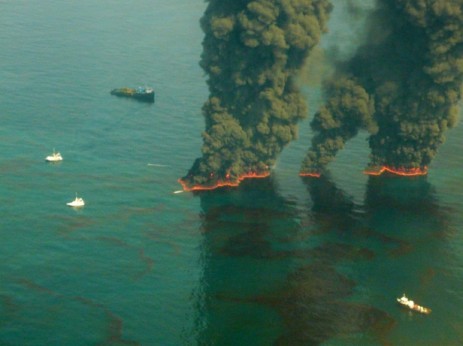In the first weeks after the Deepwater Horizon rig exploded, spilling oil into the Gulf of Mexico, government scientists were scrambling to figure out how much oil was leaking from the well. These estimates kept being revised upwards as the scientists got more information — and then revised downwards as politicians pressured them to make sunnier predictions. Correspondence obtained by the Public Employees for Environmental Responsibility (PEER) shows that political leaders in the White House and other government agencies pushed scientists to release lower estimates than they were comfortable with.
Researchers on the U.S. Geologic Survey’s plume team used different methods for estimating the spill’s volume. One method came up with a volume of 25,000 barrels per day; all the others returned higher numbers. But the White House told the public that 25,000 barrels per day was the most oil that could be pouring into the Gulf. They didn’t pull the number out of their asses or anything, but they presented the best-case scenario as the worst-case one.
The documents PEER obtained show the head of the U.S. Geologic Survey, Dr. Marcia McNutt, pointing to “people at the White Houe, DOI, and the NIC who seem incapable of understanding the concept of a lower bound.” She also says clearly that “the press release that went out on our results was misleading and was not reviewed by a scientist for accuracy.”
Science! Who needs it?



